An extended version of this article by Rick Alfandre can be found on the Alfandre Architecture website.
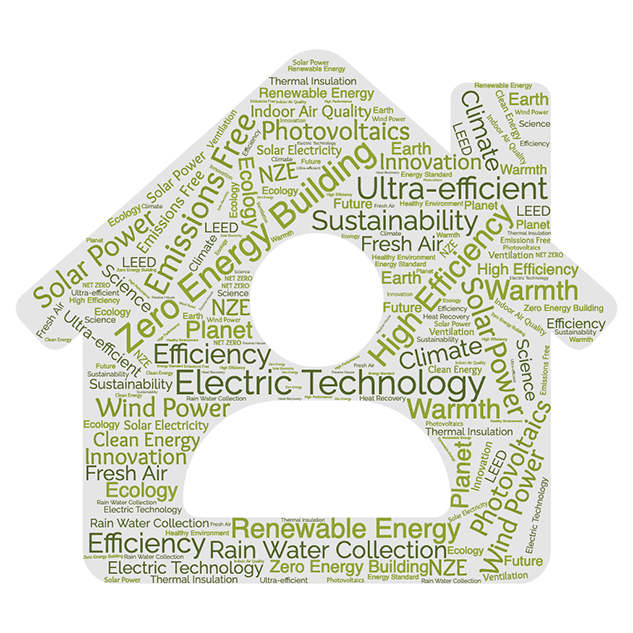
A Net-Zero-Energy building generates more energy on-site, from renewable energy sources, than it consumes. Typically, net zero energy is measured on an annualized basis.
While still a nascent market, the growth trend for net zero is steep. The count of verified buildings across the United States and Canada has increased tenfold since 2010 and encompasses over 62 million square feet of commercial and multifamily building space. As more cities and states pursue climate action plans, increased attention will be focused on net zero building performance as a standard for commercial and residential buildings.
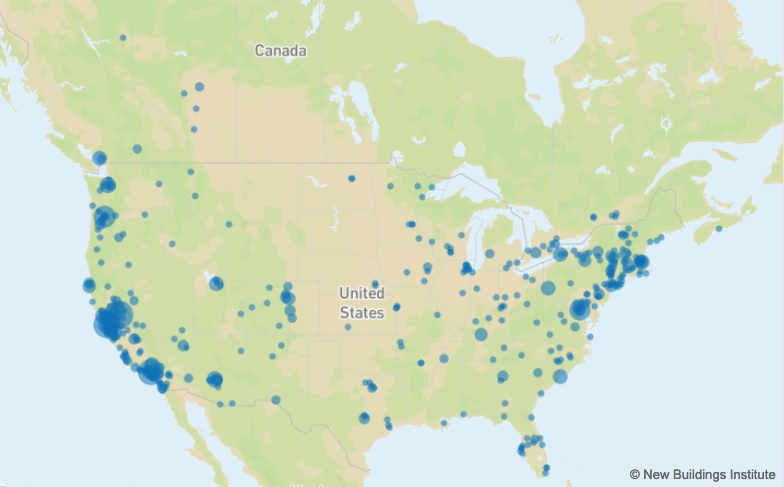
This new vision is capturing the attention of building owners and operators, designers and builders, as well as policy and civic leaders. There is potentially a huge market considering how to approach building design and operation that uses clean energy resources efficiently and eliminates the “carbon footprint” of our buildings. Note: Different people may also refer to net-zero energy (NZE) buildings as zero-net-energy or zero energy. You may see all three names referred to in this article and elsewhere.
Buildings in the United States consume more energy, by sector than either industry or transportation. Further, buildings account for the largest share of greenhouse gas emissions when we factor in the amount of electricity they use combined with the burning of fossil fuels for space heating and domestic hot water.
A Zero Energy Building (ZEB), also known as a Net Zero Energy (NZE) building, or a Zero Net Energy (ZNE) building, is a building with net zero energy consumption. The total amount of energy used by the building, on an annual basis, is equal to the amount of renewable energy created on the site. In other definitions, the building may use offsite renewable energy sources.
How do we design and build to Net Zero Energy standards?
- Minimize the loads (demand) by:
- Designing for the climate and the use.
- Building a High-Performance enclosure including:
- Properly insulated and air sealed, walls, roofs, foundations, windows, and doors.
- Minimize or eliminate thermal bridging and air infiltration.
- Use High-Efficiency mechanical equipment that is:
- Properly sized
- Flexible
- Adjustable with good controls
- Good, high-efficiency mechanical ventilation with energy recovery
- It is preferable to use a high-efficiency air source or ground source heat pump systems for heating and cooling.
- Provide high-efficiency lighting with occupancy controls
- Provide operational efficiency (where practical) including:
- Operable windows, occupant controls, and occupant education
- Offset the remaining energy load with on-site renewable energy, usually solar electric panels.
NZE Buildings may, at times, consume non-renewable energy and produce greenhouse gases, but at other times reduce energy consumption and greenhouse gas production elsewhere, by at least the same amount. NZE buildings contribute less overall greenhouse gas emissions during operations than similar non-NZE buildings.
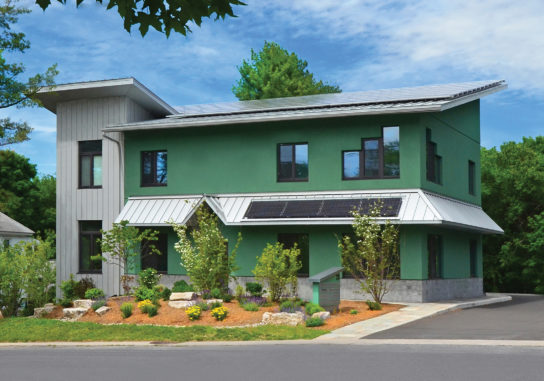
Our office building in New Paltz, NY, (photos above and below) which opened in May of 2014, which exemplifies all of the high-performance measures listed above, has been Net-Zero-Energy (actually net-positive) since it opened.
However, we do use a minuscule amount of natural gas for heating when the outside temperatures are below 10 degrees F˚. The photovoltaic system, (solar electricity) generates extra power which far outweighs the energy equivalent of the natural gas that we use. Thus, the building is verified by the New Buildings Institute and independent engineers, as Net-Zero-Energy, but it is not yet fossil fuel free. We are monitoring all the data with a newly installed data logging system and may choose to turn off the natural gas in 2022 or 2023. The air source heat pumps can probably handle the low temperatures.
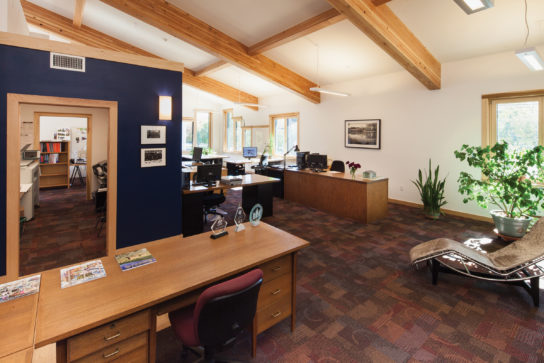
One of the major benefits of Net Zero Energy construction is that it provides enhanced ventilation and better indoor air quality without sacrificing energy efficiency. By building an ultra- energy-efficient building, that also uses efficient energy recovery ventilation, we can introduce extra fresh air to a building without worrying about the energy costs associated with conditioning that fresh ventilation air.
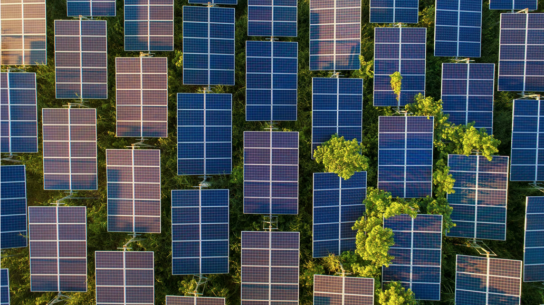
The electricity we use is increasingly coming from renewable energy sources, such as large-scale wind and solar installations. These energy sources do not emit greenhouse gases into the atmosphere, and they are now cheaper to build than any other type of utility scale energy generation. As the electricity we use becomes emissions free it makes sense for us to continue to electrify our buildings by using ground source and air source heat pump technologies for space heating and domestic hot water production.
All electric buildings are also known as zero emissions or fossil fuel free buildings. Combining emissions free electricity with emissions free space conditioning is a “win-win” for the economy, the climate, and the building owner/operator.
An extended version of this article by Rick Alfandre can be found on the Alfandre Architecture website.
